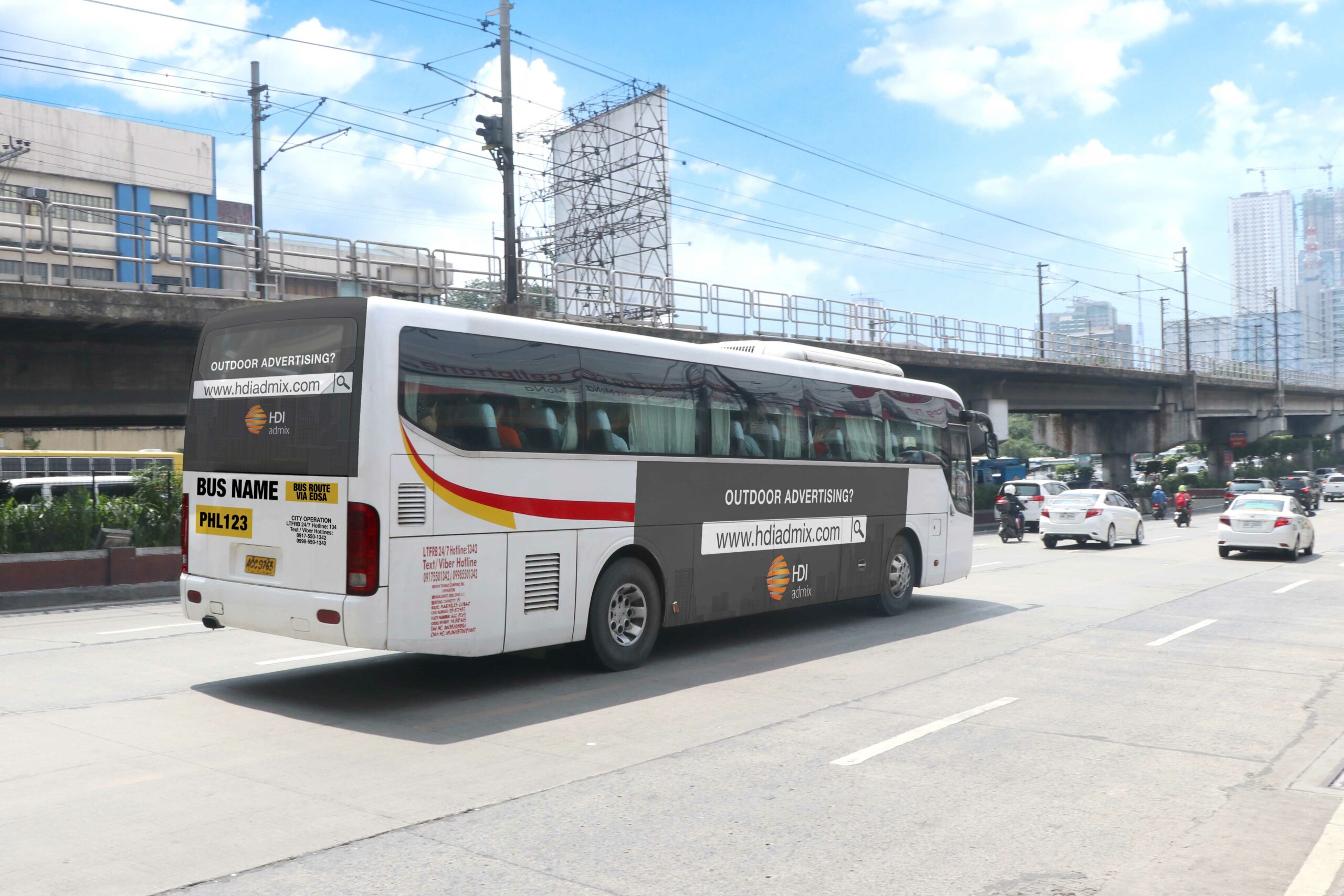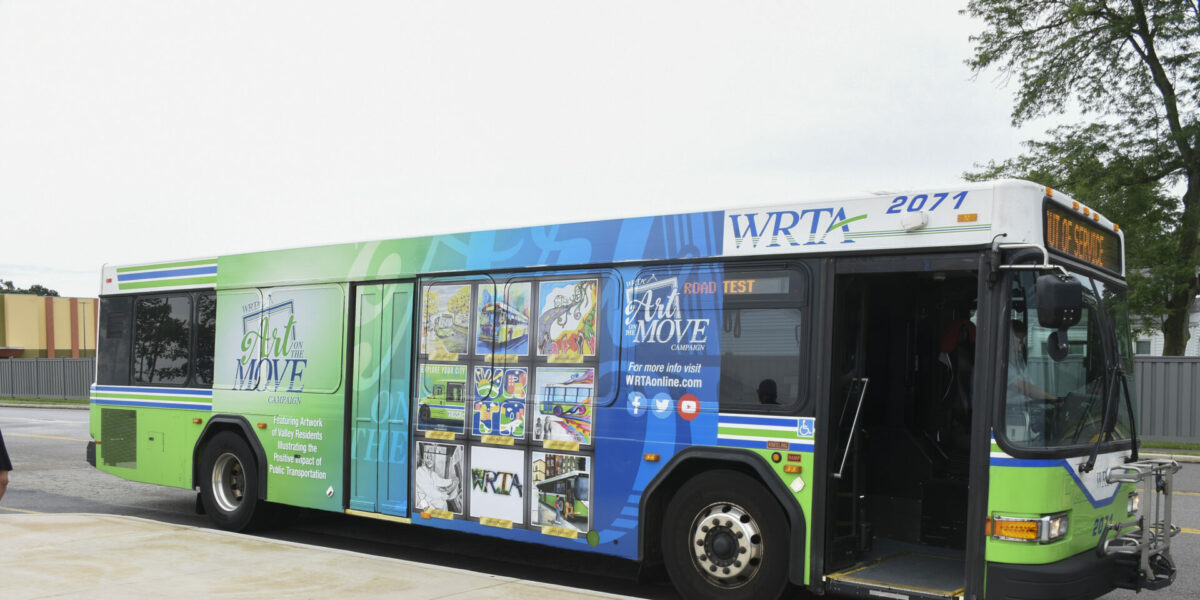Boost Your Company with Transit Advertising Philippines
Boost Your Company with Transit Advertising Philippines
Blog Article
Understanding the Function of Transit Advertising in Enhancing Brand Name Visibility and Consumer Involvement
Transportation advertising and marketing has actually arised as a critical element in the advertising landscape, providing unique opportunities for brand names to boost their visibility and involve customers properly. With the ability to get to a captive and diverse target market during their day-to-day commutes, these marketing strategies are not simply about visibility; they are about producing significant links with prospective consumers. As we check out the diverse advantages and ingenious methods within transit advertising, it becomes important to take into consideration just how these elements collectively influence customer understanding and behavior, questioning regarding their long-term effect on brand name commitment.
Meaning of Transit Advertising And Marketing
Transportation advertising refers to the technique of promoting items, services, or brand names via promotions placed around mass transit systems. This form of advertising and marketing includes a range of placements, consisting of posters on buses and trains, digital screens at transportation terminals, and covers on the outside of automobiles. It intends to get to a diverse audience, taking advantage of on the high foot web traffic connected with public transit.
Transportation advertising is purposefully placed to record the focus of commuters, who typically spend substantial time traveling or waiting. By incorporating promotions into the daily regimens of people, brand names can create a long-term impression and foster brand recognition. The medium is especially reliable in urban settings, where public transport is a primary setting of traveling.
Additionally, transportation advertising can help with localized targeting, permitting businesses to get to particular demographics based upon transit paths and station places. As city populaces grow and the usage of public transport increases, this advertising and marketing approach has gotten prestige as a vital component of incorporated advertising strategies. The dynamic nature of transit marketing, integrated with its ability to involve customers in a captive setting, emphasizes its importance in modern advertising and marketing techniques.
Benefits of Transportation Advertising
The performance of transit advertising depends on its capability to deliver a wide variety of advantages to brands seeking to boost exposure and interaction. Among the main advantages is the extensive reach it supplies; transportation ads can properly target varied demographics across metropolitan areas, reaching both pedestrians and commuters alike. This broad exposure significantly boosts brand understanding.
An additional benefit is the high frequency of impressions. As transit vehicles follow well-known routes and stop at numerous locations, they develop repeated direct exposure that reinforces brand name messages. This frequency fosters knowledge, which is critical in customer decision-making.
Transportation advertising and marketing is likewise cost-effective contrasted to other media systems. Given its expansive reach and possibility for high impressions, brands usually experience a reduced price per thousand perceptions (CPM), optimizing their marketing spending plan.
Additionally, transportation ads can create a sense of community link. By aligning with neighborhood transportation systems, brands can resonate with local target markets and foster a sense of neighborhood pride. This local approach improves brand commitment and engagement, making transit marketing an engaging choice for services intending to strengthen their visibility in the market.

Efficient Approaches for Transit Campaigns
To make the most of the influence of transportation campaigns, brands should take advantage of tactical planning and implementation customized to their target audience. Initially, identifying the group attributes of the audience using public transit is crucial. This allows brands to produce individualized messaging that reverberates with prospective consumers.
Following, selecting the appropriate transit tools is necessary. Whether utilizing bus wraps, subway posters, or digital screens, each tool has unique benefits that can improve visibility. For instance, lively visuals on bus covers can bring in attention, while digital advertisements can be upgraded often to reflect prompt promos.
In addition, incorporating a cohesive branding strategy throughout transit systems makes sure uniformity and strengthens the brand name's identification. Making use of distinctive styles and memorable taglines will certainly reinforce brand recall amongst commuters.
Finally, timing is a vital aspect in carrying out successful transit campaigns. Launching projects during great post to read height traveling hours or local events can significantly boost visibility and interaction. By employing these strategies, brands can effectively harness the potential of transportation marketing, promoting greater awareness and connection with their target market. Ultimately, a well-executed transportation project can drive significant growth in brand visibility and customer interaction.

Measuring Effect and Involvement
In assessing the effectiveness of transit ad campaign, exact measurement of effect and involvement is essential for brands seeking to maximize their advertising approaches. Metrics such as reach, frequency, and perceptions offer foundational data to analyze exposure. Examining these aspects assists determine the number of potential customers are revealed to the advertisements during their everyday commutes.
Engagement can be further gauged with consumer communications, such as web site web traffic, social media sites points out, and direct reactions to calls-to-action featured in the ads. Utilizing devices like QR codes or distinct Links can facilitate monitoring of consumer habits directly linked to transit campaigns. Studies and feedback mechanisms additionally function as important approaches to gather qualitative information on consumer understandings and recall of the ad.
Additionally, progressed analytics and attribution models can associate transportation exposure with succeeding purchasing behavior, offering insights right into the return on financial investment. website here By utilizing a comprehensive strategy that combines quantitative and qualitative actions, brand names can develop a nuanced understanding of their transit marketing influence. Inevitably, this data-driven approach enables brand names to improve their projects, ensuring they resonate successfully with target market and enhance total brand presence.
Study of Effective Projects
Effective transit marketing campaign work as compelling instances of how reliable approaches can elevate brand name visibility and involvement. Transit Advertising Philippines. One significant case is the "I Love New York" campaign, which transformed the city's picture and attracted countless travelers. By using train ads, billboards, and bus wraps, the campaign created a strong, cohesive brand identity, resulting in a significant uptick in tourist and neighborhood organization patronage
An additional excellent project is Coca-Cola's "Share a Coke" effort, which leveraged transportation advertising and marketing to individualize the brand name experience. By featuring prominent names on promotional materials throughout numerous transportation platforms, Coca-Cola fostered a much deeper emotional connection with consumers, motivating them to share their experiences on social media.
In addition, the "Got Milk?" project properly made use of mass transit ads to get to a broad audience, strengthening the message of the relevance of milk in a balanced diet plan. The project saw a measurable rise in milk intake in target demographics.
These instance researches show that when carried out attentively, transit advertising and marketing can dramatically enhance brand name presence, foster customer interaction, and drive quantifiable results, showing its vital function in modern advertising and marketing techniques. - Transit Advertising Philippines
Conclusion
In conclusion, transit advertising and marketing works as an essential device for boosting brand name presence and fostering consumer involvement. By using purposefully put promotions within mass transit systems, brand names can effectively reach diverse audiences and strengthen acknowledgment through consistent exposure. The execution of targeted messaging and innovative techniques additionally intensifies the impact of transit campaigns. Eventually, the capacity to gauge involvement and evaluate successful study highlights the efficiency of transportation advertising in driving brand loyalty and consumer interactions.
Transit advertising and marketing has actually arised as an essential aspect in the marketing landscape, offering unique possibilities for brand names to raise their exposure and engage customers properly.In addition, transportation marketing can help with local targeting, permitting services to reach specific demographics based on transportation paths and station areas.In reviewing the effectiveness of transportation advertising and marketing projects, accurate measurement of impact and interaction is vital for brands seeking to optimize their advertising and marketing approaches.Successful transportation Full Report advertising campaigns offer as compelling examples of exactly how effective approaches can raise brand name exposure and engagement.In final thought, transit marketing serves as a crucial tool for enhancing brand name visibility and cultivating consumer interaction.
Report this page